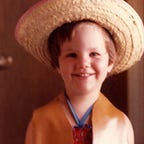I have a secret. I hid it for years.
I’ve been selectively avoiding the news. For years.
Recently, I confessed my secret in an essay in the Washington Post (irony intended!). It did not feel comfortable to admit this, let me tell you. But since then, I’ve been inundated with validating, positive…downright ebullient responses.
Turns out there are a LOT of reporters who are feeling deeply unsatisfied with the news as it is traditionally covered — and, of course, a much bigger audience of non-journalists who gave up on the news a long time ago.
Like me, they started out blaming themselves. They were embarrassed. They wanted to be informed — but they also wanted to get out of bed in the morning.
Eventually, I had to conclude that it’s not just me. There is something wrong with the way the news is delivered and framed. It is not designed for the human brain.
Even when things get better, when Covid cases plummet, when Congress actually acts, when a police department get reformed, when greenhouse gases get cut… the framing of the news doesn’t change. It remains the same: Vibrating with anxiety, reflexively disappointed, rarely delighted.
It’s like that friend you have — who always sees the worst in everything. You go out for coffee and feel empty afterward. Finally, you stop going.
So one thing we know for sure: there is huge unmet demand for something different, something that doesn’t make us feel like screaming into the void. Not fluffy stories about firefighters saving kittens from ATM machines, but rigorously reported stories that leave us smarter about the world around us. If we extrapolate out from the latest Reuters Institute data on news avoidance, there are currently about 100 million American adults whose news needs are not being met right now.
News for Humans
So what would be better? In the essay, I make the case for routinely and systematically reporting out Hope, Agency and Dignity in every story. Those are the three components missing from most coverage — but essential to human health. And I shared a few places that are trying to do so, including the Christian Science Monitor and the Solutions Journalism Network.
I heard from a lot of you with other great suggestions. Multiple readers mentioned Headway, a relatively new (and still small) initiative from the New York Times, designed to “Explore the World’s Challenges Through the Lens of Progress.” (And as it happens, a story I applauded in my Post column, on how Houston reduced homelessness, was actually from this section!) Another friend swears by David Leonhardt’s New York Times newsletter The Morning as a voice of reason and hope in the maelstrom of daily news. (“I just want to bake him some blueberry muffins!” she said.) The Economist, meanwhile, unflinchingly covers hard things around the world, but it does so with a long view and a wide lens.
Importantly, these places are not focused on “positive” news. That is not what we need here, friends! Real life is hard, and we need to know about it, in all its messiness. But we deserve a fuller picture of the problems — and the solutions.
For health news: STAT offers a less manipulative, more curious view of scientific and medical progress and risk. Emily Oster’s parenting newsletter is also extremely helpful for assessing COVID risk, especially with regards to children. She puts threats in perspective — which leads to more hope and agency, and less pointless despair. For education news infused with dignity, hope and agency, multiple people recommended The Hechinger Report and the Seattle Times’s Education Lab.
It’s hard to explain, but you get the sense, reading these outlets, that they have your back. They want good things for you. That feeling is missing in so much other news content.
That’s the kind of journalism I want to do going forward. Low-ego, high-curiosity journalism. That’s why I’ve stopped writing traditional stories for the most part. I’ve started hosting a podcast where we help our listeners with problems they are having by finding the wisest people we can to travel alongside them (agency, hope). And, with broadcast journalist Hélène Biandudi Hofer, I’ve been training journalists and non-journalists alike to understand conflict differently, based on how humans actually operate. We’ve both been pitching stories that don’t fit the usual categories. It doesn’t always work, as you might imagine. Our pitches don’t always land. Which tells us we’re probably doing it right.
“Originality is unexplored territory,” as Alan Alda once said. “You get there by carrying a canoe. You can’t take a taxi.”
I could use your help carrying the canoe. Please let me know if you discover a news source or even a single story that you think demonstrates what news for humans would look like. I’m keeping a list and sharing it far and wide, every chance I get. Thanks!
